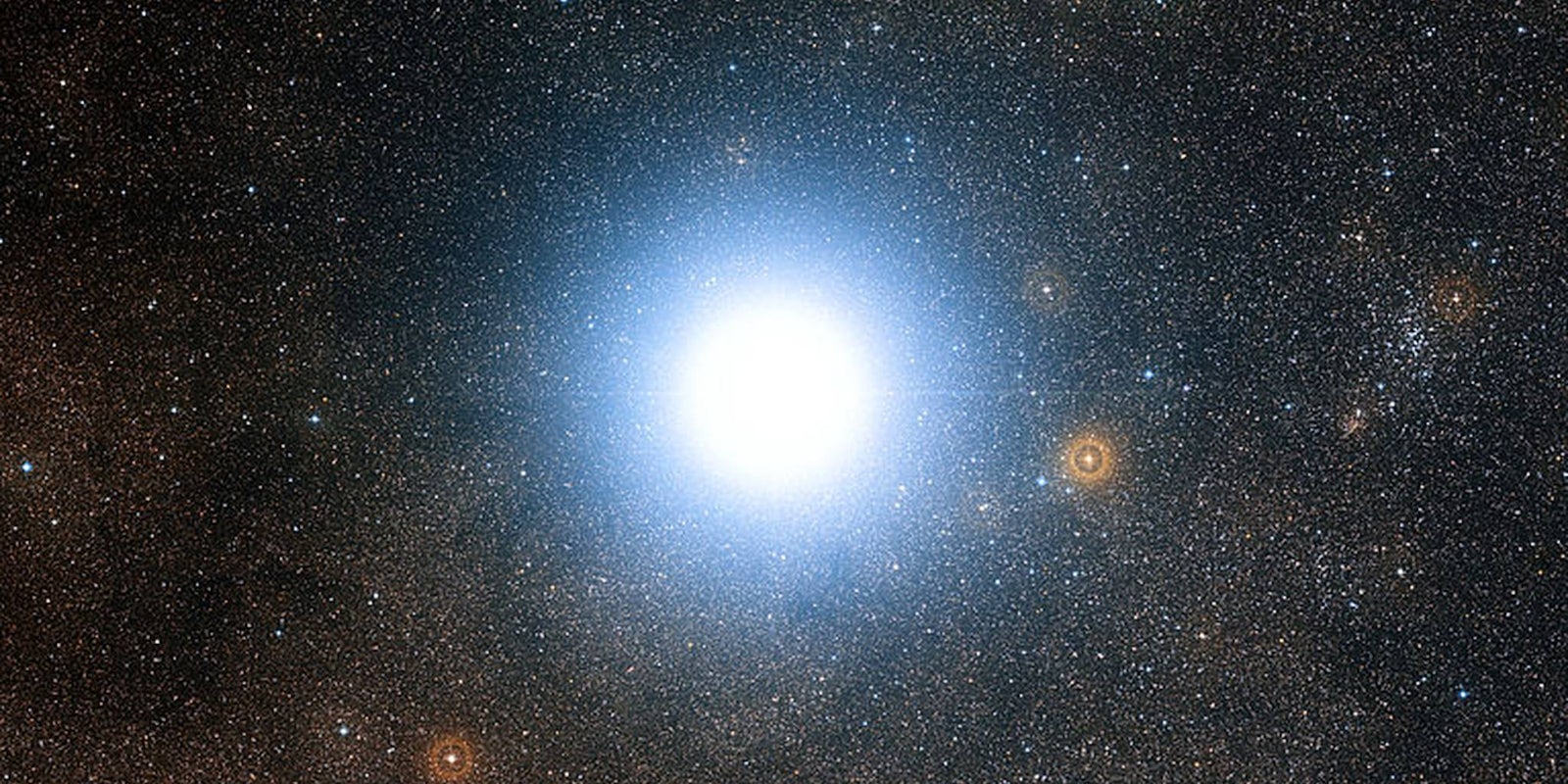Physicist Stephen Hawking and philanthropist Yuri Milner convened at One World Observatory in New York City today to announce a new spacecraft that promises to reach our neighboring star, Alpha Centauri, 20 years after its launch.
The project, called Breakthrough Starshot, will utilize an extremely thin and lightweight material called a LightSail to propel it through space. Instead of wind, the sail will catch light as its source of “fuel.” An array of lasers on Earth will concentrate a beam toward the sail, launched in space from a mothership, to send it on its way. According to Milner, the craft could theoretically reach about 20 percent of lightspeed, or about 100 million miles per hour. The sail will carry a tiny “StarChip” jam-packed with sensors, cameras, and other technology to search for life along the way.
To put the speed of the craft into perspective, Milner drew a parallel with the starcraft Voyager, which only recently broke through to interstellar space traveling at about 40,000 miles per hour.
“If Voyager left our planet when humans first left Africa,” Milner said, “it would be arriving to Alpha Centauri just about now.” Alpha Centauri is about 4 light years away from Earth, or roughly 25 trillion miles.
It should cost about $100 million to get Breakthrough Starshot off the ground, but it’s designed to be a proof-of-concept. If successful, it will demonstrate a new way for humans to explore space using unmanned spacecraft.
Pete Worden, the former director of NASA AMES Research Center, will lead the project advised by Milner, Hawking, and a team of scientists and engineers. Mark Zuckerberg will also join Milner and Hawking on the project’s board.
Breakthrough Starshot follows on the heels of another Milner-Hawking collaboration, Breakthrough Listen, a program that surveys the one million closest stars to Earth for evidence of extraterrestrial civilization.
At this point, there’s no set timeline for how long it will take to launch the spacecraft. There are a number of engineering hurdles to clear, in addition to securing the investment to launch such an ambitious project. But the importance of the project is clear.
“Without new methods of propulsion we simply cannot get very far,” Hawking said.
He also said that the “probability is low” that we will find intelligent life. But looking for habitable planets is an equally, if not more, worthwhile endeavor, Hawking said.
“To survive as a species, we must ultimately spread to the stars,” Hawking said. “Today we commit to the next great leap into the cosmos.”


